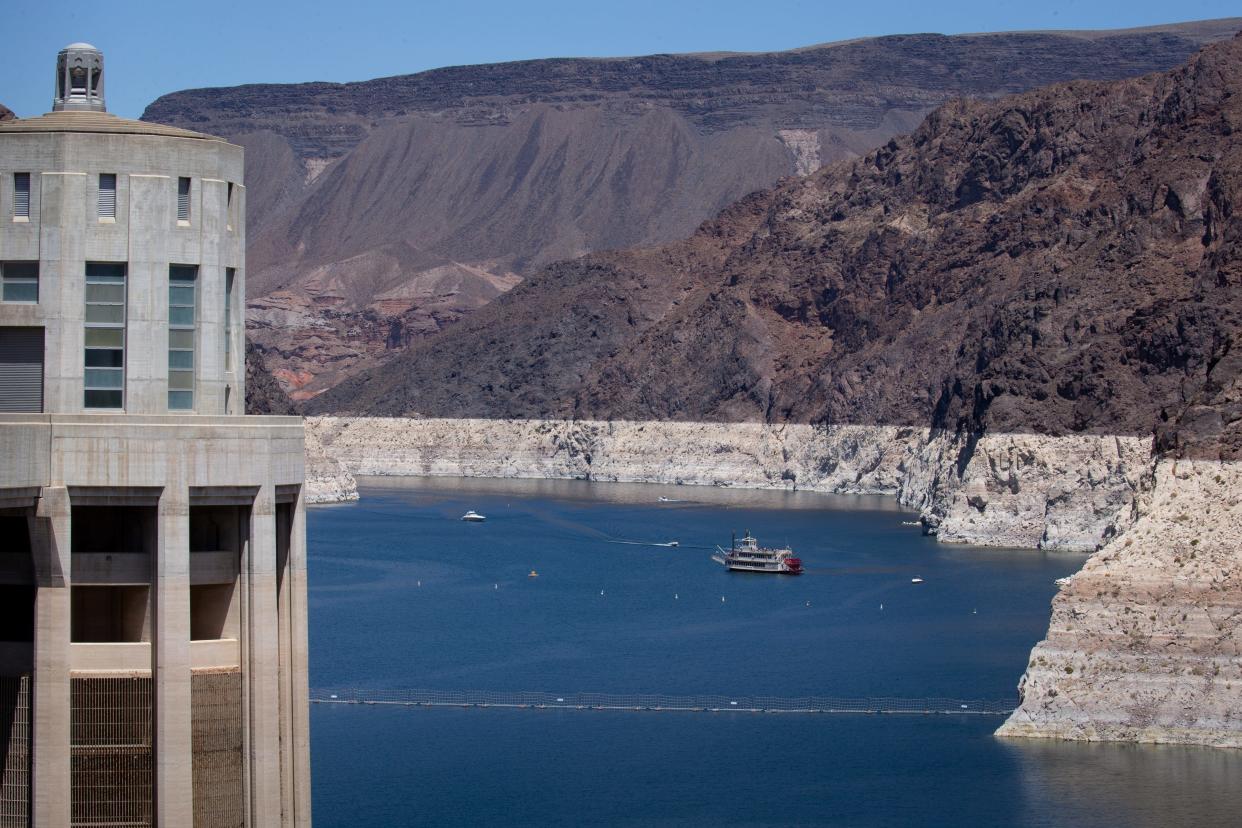Latest plan to save Lake Mead is imperfect — and maybe what the Colorado River needs

The latest proposal to save Lake Mead solves nothing, long-term.
Its success relies on the premise that farmers, cities and tribes in Arizona, California and Nevada will volunteer, rather than being forced, to temporarily stop using significantly more Colorado River water than they have before.
Most of that saved water will come at a price.
And if the proposal works as envisioned, it would simply stabilize Lake Mead until the current rules to operate the lake expire at the end of 2026.
Essentially, buying us time.
Plan would front-load water in Lake Mead
It may not be the best way to spend an estimated $1.2 billion in federal cash.
But it may be the best deal to move us forward.
If we can stabilize Lake Mead, even temporarily, the hope is that will free time to focus on a parallel process setting rules for the next 20 years.
Rules that could more permanently ensure we don’t use more water than the river produces.
Arizona, California and Nevada are proposing to voluntarily save at least 3 million acre-feet of water in Lake Mead through 2026, over and above any other water cuts to which we’ve previously agreed.
That’s enough over three years to cover the entire city of Phoenix in more than 9 feet of water.
Half of that would be offered up by the end of 2024, which should create more protection than if an equal amount were saved each year.
It could do as well as mandatory cuts
No one’s signed off on this deal.
But the seven Colorado River basin states like it enough to ask that it be included in the options the feds are considering to protect Lake Mead and the upstream Lake Powell from reaching dangerously low levels.
Doing so would suspend the May 30 public comment deadline on the draft plan and likely delay a final decision for months.
But presuming that additional modeling confirms what many believe — that a voluntary deal could prop up the lakes as well or better than the current alternatives, which rely on mandatory cuts — it seems unlikely that anyone would try to tank what the states negotiated.
Another view: This water fight could get aggressive. And ugly
Particularly considering that a voluntary option would wipe out the very real possibility of this thing winding up in court, with bitterly fought lawsuits tying up any meaningful action on the Colorado River for who knows how long.
If that’s the case, a voluntary deal would put us in a far better place to negotiate more permanent solutions for the 40 million of us (and growing) that rely on the Colorado River.
Proposal includes an important fail-safe
But what if this latest proposal fails to protect Lake Mead?
Maybe water users don’t volunteer the full 3 million acre-feet. Or perhaps the hydrology changes and the lakes begin to plummet even with additional water saved (hey, it’s happened before).
States would have 45 days to come up with a plan to do more once Lake Mead was forecast to hit 1,025 feet of elevation.
And if they fail, the feds could then act unilaterally to protect Lake Mead from plummeting below 1,000 feet.
How? Good question. As with everything, the devil’s in the details, which are still taking shape.
But that could be an important fail-safe.
Is it ideal? No. But can we live with it?
Will it absolve the fights that have gummed up negotiations for months?
No. It’s only a matter of time before they resurface.
But major water deals these days aren’t about what we like. Or even what we want.
They’re about what we can live with.
If voluntary action can keep Lake Mead healthy enough, so we’re not constantly triaging its day-to-day care, maybe we can finally start formulating a plan for its long-term recovery.
That should not only be the goal of whatever happens next, but the expectation.
Reach Allhands at joanna.allhands@arizonarepublic.com. On Twitter: @joannaallhands.
If you love this content (or love to hate it – hey, I won't judge), why not subscribe to get more?
This article originally appeared on Arizona Republic: Lake Mead plan may not be what we like, but it could be what we need

